Hilsa: The fish that is being loved to death
- Published
U Kauk Tin: 'Now this fish is becoming very rare.'
For decades fishermen in Myanmar have caught and sold the hilsa fish, but overfishing and poor regulation is taking a terrible toll, as the BBC's Ko Ko Aung reports.
"We have been catching hilsa for years. So did my parents. In those days the fish were big and we caught plenty.
"These days my children and I catch hilsa, but there are fewer fish and they are getting smaller. Now this fish is becoming very rare."
U Kauk Tin, 65, is one of many fishermen in the Irrawaddy delta of Myanmar (also called Burma) struggling to get by as the fish they rely on for their daily income disappear from the rivers.
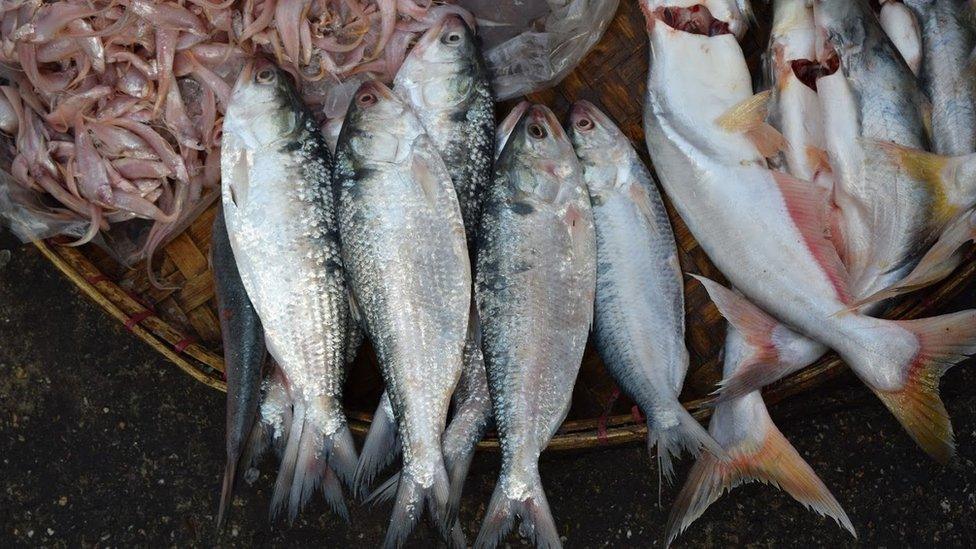
The hilsa is a staple of the diet in Myanmar and Bangladesh
Hilsa (Tenualosa ilisha) - a kind of Indian herring - used to be abundant in the waters along the Bay of Bengal.
It was Myanmar's most exported fish caught in the wild, but that is no longer the case as stocks have declined in recent decades.
Myanmar catches about 15-20% of all hilsa globally, second only to neighbouring Bangladesh which is responsible for about 60% of the total catch in the world, according to a report by the Bay of Bengal Large Marine Ecosystem (BOBLME) project.

Stocks of hilsa have plummeted through overfishing in recent years
BOBLME - an international partnership involving the UN's Food and Agriculture Organisation and governments in the region - estimates that the hilsa industry is worth more than $2bn (£1.5bn) globally.
Hilsa swim from the Bay of Bengal to the rivers to spawn.
But commercial trawlers catch them with purse seine nets - a large circular wall of net which goes down very deep to scoop up fish of all sizes.
Researchers say that trawlers in Myanmar are using nets with a 2.5cm (one inch) mesh - trapping smaller, juvenile fish, even though the minimum standard size should be 10cm.
Those fish that do reach the rivers are caught by small-scale fishermen with very fine gill nets which trap even the youngest fish.
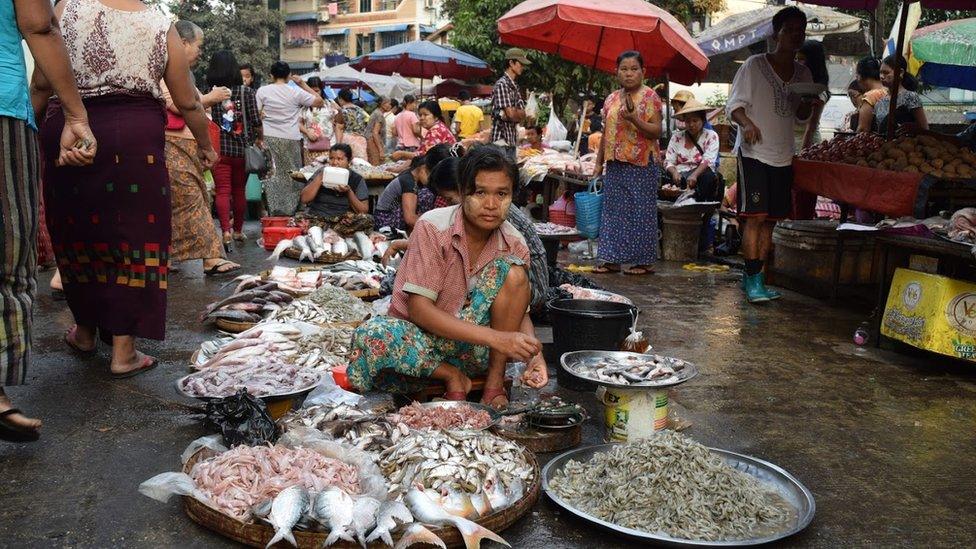
The size of the catch - and the fish - have dwindled - but people still want to eat them
Hilsa can grow up to about 50cm, weighing more than 3kg. But most of the fish caught in Myanmar today weigh between 300-500g.
"There's no minimum size for catching the fish, so a lot of juveniles are caught [with a length] lower than 25.7 cm. And that means the fish has not had the opportunity to reproduce," said Michael Akester from WorldFish, an international organisation working with governments in the region to improve fishery management.
The closed season for hilsa fishing in Myanmar runs from May to July but there is no effective enforcement, largely due to economic reasons.
Small-scale fishermen are among Myanmar's poorest residents and banning them from fishing is not practical because they do not have other ways of earning money.
There is also no closed season at sea because Myanmar's government still allows 30% of fishing trawlers to operate during the months the fisheries are supposed to be closed.

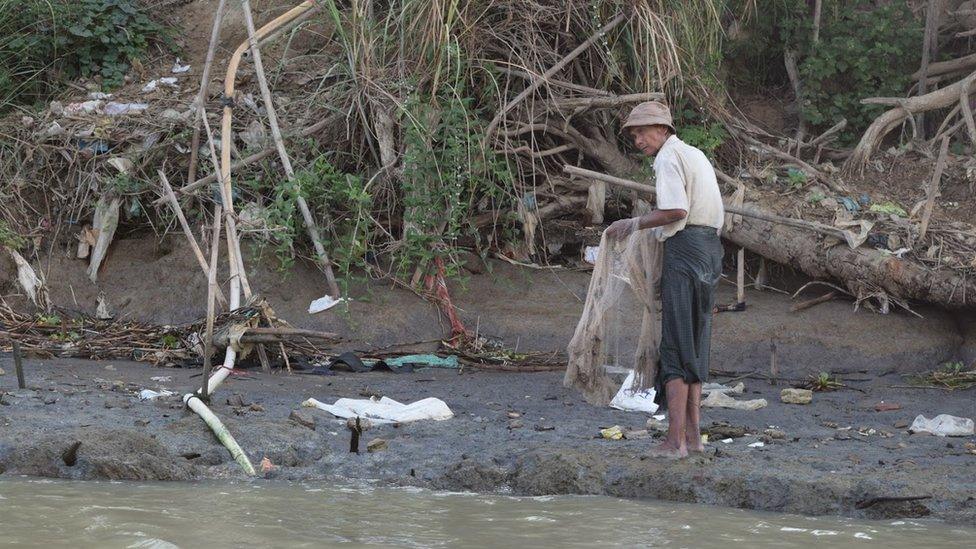
Polluted water and rubbish have contributed to the problem
Currently, there is no detailed assessment of fish stocks in Myanmar, but most experts say improved fisheries management is urgently needed.
Water pollution and climate change are also major factors behind the hilsa's decline.
Dumping rubbish, including plastic bags, in rivers is common and excessive use of pesticides is also a significant problem as the toxins flow into the rivers, reducing nursery grounds for hilsa.

Many of Myanmar's fishermen are poor and have no other way of earning a living
But a senior official from Myanmar's Department of Fisheries said hilsa were still abundant in the country.
"We don't need to worry because we are still catching a lot," said Tun Win Myint, one of the department's directors.
Government figures show an increase in hilsa catch at sea in the last year. But the size of fish are mostly about half of that of full-grown adults.
"You can increase the catch level just by increasing the input," pointed out Essam Yassin Mohammed, a senior researcher from the London-based International Institute for Environment and Development (IIED).
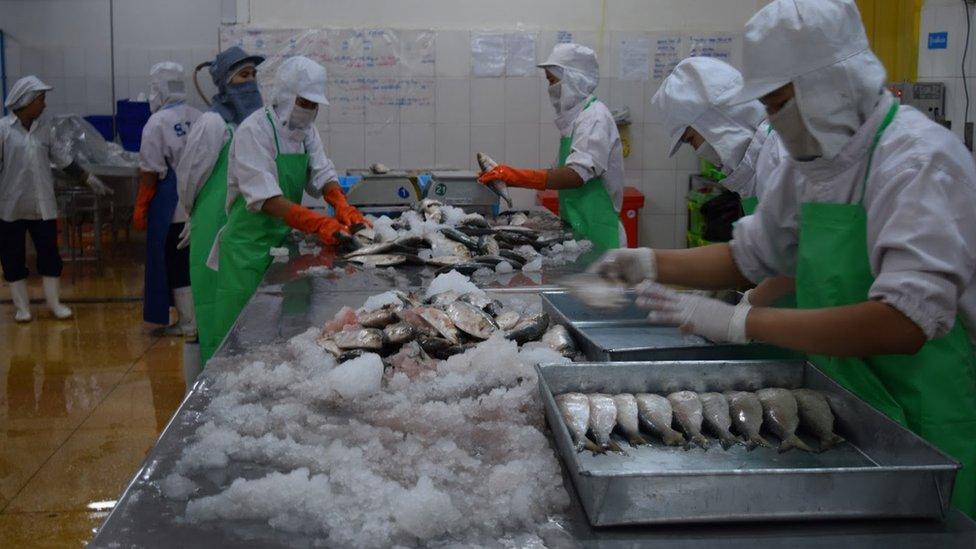
It may take years to improve hilsa stocks in Myanmar waters
"You increase the number of fishing vessels, increase the days you spend at fishing."
This year, IIED is going to work on a project to help Myanmar's poor fishing communities using a programme they implemented in Bangladesh in which fishing communities were given rice as an incentive not to catch hilsa in the closed season.
But the four-year project is only in its inception and it still needs to establish a model that would work for Myanmar.
Supplies of hilsa in the Irrawaddy Delta are being threatened by overfishing
There is also a need to improve both fishery laws and monitoring so that stocks can return to sustainable levels.
"The Department of Fisheries are currently trying to improve their control, but they will probably take a decade to get to a position where it could be stated that the fishery is fully sustainable," said Michael Akester.
"If laws aren't in place, if the ability to implement the laws to police the fisheries, to have a quota, to have a minimum size, if those factors aren't in place it will be difficult to come to a sustainable fishery," he said.
U Kauk Tin knows that he and fishermen like him have a role to play in solving the issue, but he needs help.
"If we catch the small fish, of course they can't grow bigger. But if I don't catch them then we can't earn a living," he said.
"That's why we catch anything we can."
- Published14 September 2011
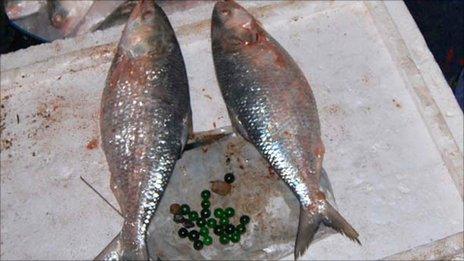
- Published6 September 2011